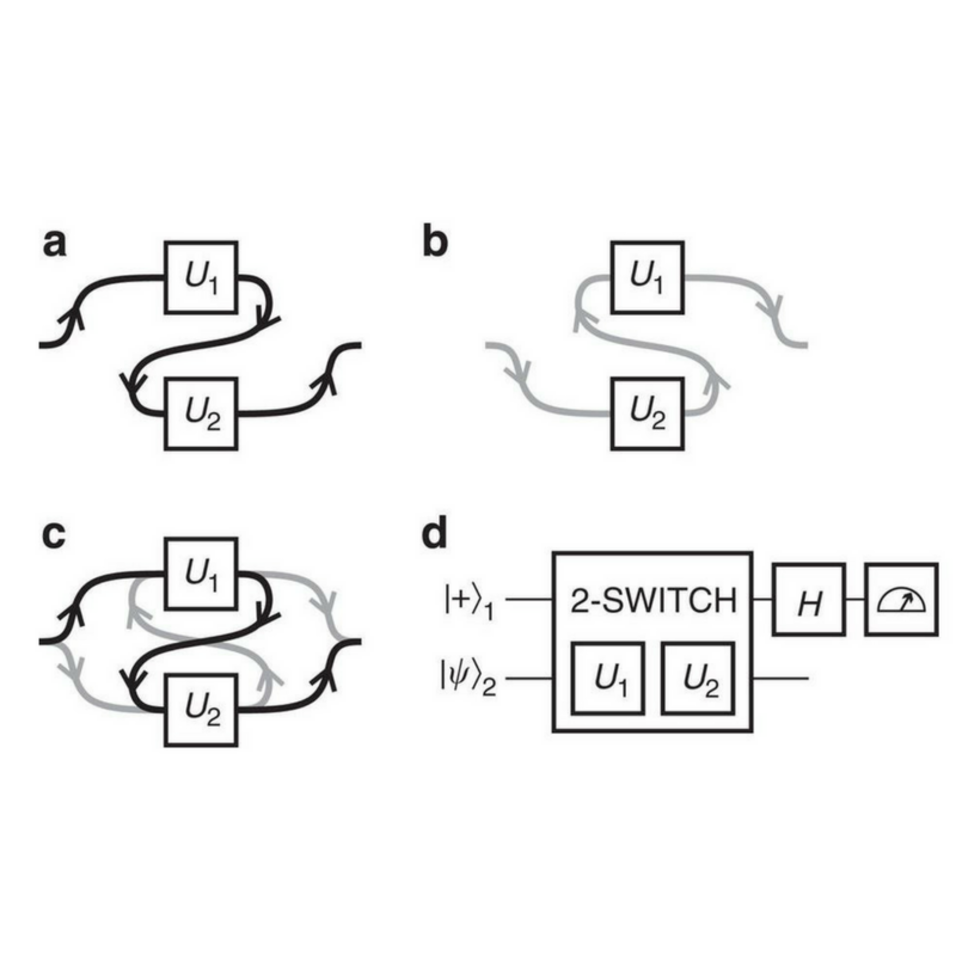You can find the online document here.
Publication appeared in Nature Communications

(a) Given two unitary gates, U1 and U2, the circuit model allows us to wire them in one of two possible ways: either U1 before U2, or (b) U2 before U1. (c) Quantum mechanics allows us to coherently control both options, such that the qubit sees both U1 before U2, and U2 before U1. (d) The 2-SWITCH operation applies U1 and U2 to qubit 2 in both orders, as shown in panel c, dependent on the state of qubit 1. Unless at least one of U1 and U2 is used more than once, the 2-SWITCH operation cannot be implemented with standard circuit-model elements. To be explicit, the 2-SWITCH applies U1U2 to (the lower qubit) if the upper qubit is in , and U2U1 to if the upper qubit is in . Measuring the state of qubit 1 in the basis allows one to unambiguously decide if U1 and U2 commute or anti-commute with only a single use of each gate. In this circuit, H is the Hadamard gate, and .
